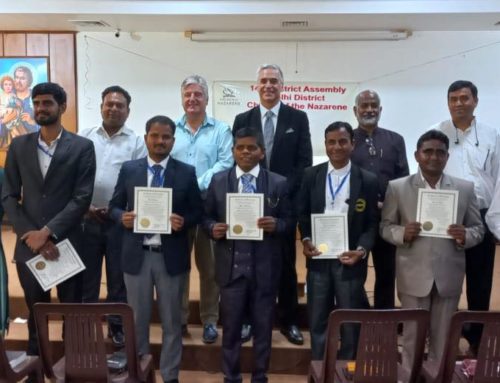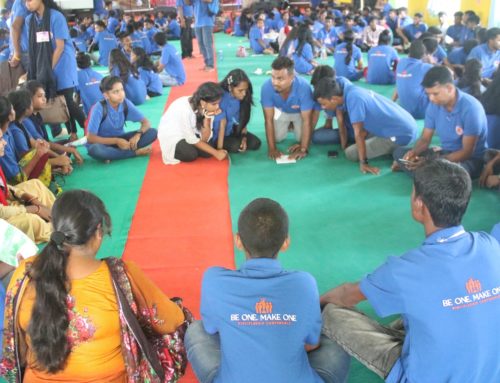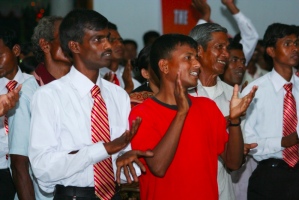 Dinajpor, Bangladesh – History and future. Missions of the 21st century.
Dinajpor, Bangladesh – History and future. Missions of the 21st century.
That’s what more than 2,000 Bangladeshis and a group of foreign visitors experienced at the 17th Bangladesh District Assembly March 23-24 when nearly 2000 delegates unanimously voted to sponsor the creation of two Phase 3 districts by dividing the current Bangladesh District into three self-supported districts. The vote was followed by an uproarious standing ovation.
The district also celebrated surpassing the 1,000th organized church milestone, having officially organized more than 1,220 churches between 1996 and 2009.
“We are witnessing history and future,” said Dr. Gustavo Crocker, director of the Eurasia Region, speaking at the assembly’s opening. “What we are seeing in Bangladesh is the result of the missiology of the 21st century: A group of national leaders, fully supported and equipped by committed and capable non-resident missionaries, and embraced by our entire denominational missionary system, has seized the moving of the Holy Spirit in this nation. As a result, the work that I first visited in 1994 has grown to the point of becoming a model of indigenous church multiplication.”
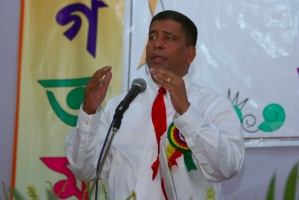 Before the vote, the Bangladesh District was the largest in the denomination, and the first self-supporting, or Phase 3, district in the South Asia Field.
Before the vote, the Bangladesh District was the largest in the denomination, and the first self-supporting, or Phase 3, district in the South Asia Field.
The Bangladesh District was established in 1994 with only two churches. Within about seven years it had organized 100 churches. Seven years later – by 2009 – it surpassed 1,220. Essentially, the district grew more than 10 times its size every seven years. This does not include another 1,000 Church-type missions that are working toward organization in the next five years.
The two new districts are expected to grow even faster, as they launch with more than 300 churches each, with strong leadership already in place and an established strategy for church planting, discipleship and leadership training.
“I hope that we will be able to organize 404 more churches in 2010 for the glory of His Kingdom,” said Sukamal Biswas, district superintendent, in his report to the assembly.
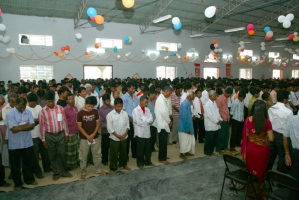 The growth of the church in Bangladesh is credited in part to the way it began – with local leaders and integrated ministry. Without resident missionaries, but supported by the denomination’s missionary structure, Nazarenes in Bangladesh from the beginning implemented a holistic strategy of church planting. Unlike many other world areas, they completely integrated compassionate ministries, JESUS Film evangelism and leadership training and education, said Crocker.
The growth of the church in Bangladesh is credited in part to the way it began – with local leaders and integrated ministry. Without resident missionaries, but supported by the denomination’s missionary structure, Nazarenes in Bangladesh from the beginning implemented a holistic strategy of church planting. Unlike many other world areas, they completely integrated compassionate ministries, JESUS Film evangelism and leadership training and education, said Crocker.
“I would say that the fact we did not start this work in Bangladesh with missionaries … but it was started through the Bangladeshi people with a lot of support … that is quite historic,” said Dr. James Diehl, general superintendent emeritus, who participated in the assembly by helping to ordain 194 new elders. “We may have to figure out the new Bangladesh style because it has been so successful, rather than the other styles we’ve worked with for over 100 years that have certainly paid off, but not this quickly.”
Among the ministries at work in Bangladesh are JESUS Film and EvangeCube teams, child development centers, disaster relief, microlending projects, pastoral education, pastors’ kids sponsorship, Nazarene Youth International, Nazarene Missions International, Sunday School ministries, Work & Witness, and leadership development.
{gallery}AssemblyBangladesh2010{/gallery}
Click on the image to view more pictures of the District Assembly.


